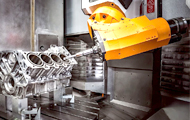Murata capacitors are widely used in a variety of applications due to their high performance, reliable operation, and wide range of types and sizes available. These capacitors are utilized in consumer electronics, automotive, industrial, and telecommunications applications.
In consumer electronics, Murata capacitors are used to reduce electrical noise, increase signal integrity, buffer voltage, and store energy.
In automotive and industrial applications, Murata capacitors provide efficient power conditioning and can often be found in power supplies and motor control circuits. In telecommunications, they are often used to reduce AC ripple and store energy in the form of a charge.
Murata capacitors are also used in sensor applications, providing reliable electrical signals in gas, pressure, or temperature sensors. The low impedance and higher capacitance of Murata capacitors result in superior signal accuracy and stability.
Murata capacitors are used in medical device applications such as defibrillators, cardiac pacemaker systems, oxygen monitors, and infusion pumps. Their robust construction and low ESR (equivalent series resistance) enable superior performance for safety-critical applications.
Murata capacitors are also used in renewable energy applications such as solar and wind power systems, providing clean power to the system. They provide efficient energy storage and can help maximize energy conversion efficiency.




Quality assurance is critical to both us and our customers, not only affects our reputation, but also the customer experience, quality is also related to the long-term success of our company.
The quality inspection process can help reduce the possibility of defective products being sold to customers, and also help us track down the problematic links for correction.
Supplier Quality:
Communicate with suppliers to establish clear and consistent quality standards
Check and record the capacitance provided by the supplier in detail, which can help us track the quality reputation of the supplier
Regularly evaluate the performance of suppliers, and will no longer cooperate with unqualified suppliers
Internal Enterprise:
Formulate clear quality inspection standards as the basis for the inspection process, and develop detailed inspection procedures to ensure quality control.
Train all personnel involved in the quality inspection process on established systems and procedures
Regularly monitor monitoring results to ensure compliance with quality standards, identify areas for improvement, and adjust internal QA processes as needed
Capacitor Quality Check:
Visually inspect the appearance of the capacitor to ensure that the product has no signs of wear such as cracks or bulges
Check the capacitor label and related data parameters to ensure that the product meets the specifications provided by the manufacturer





